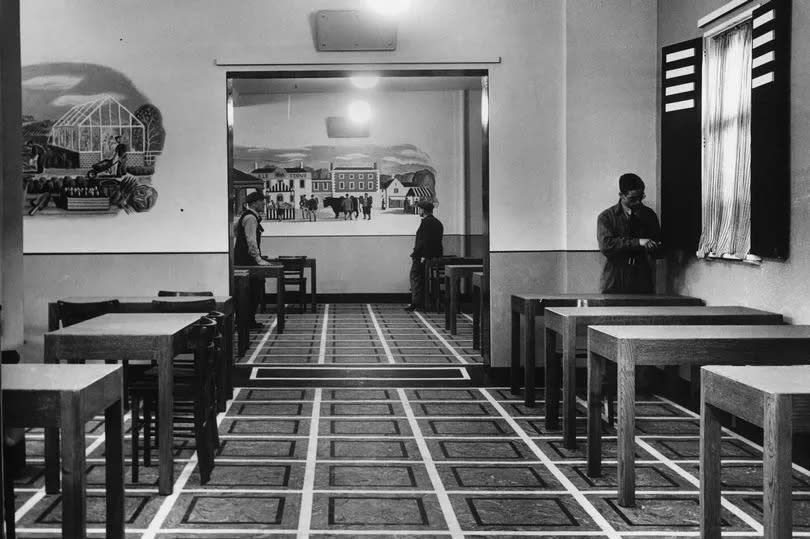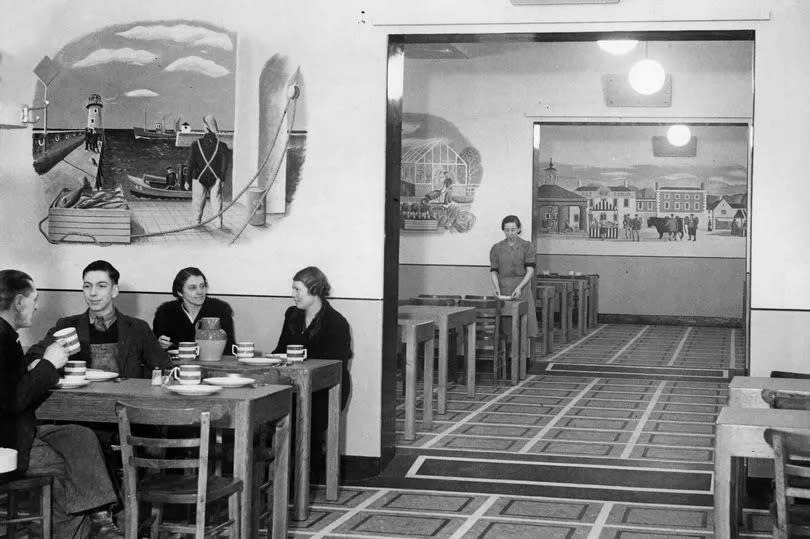Inside the lost Liverpool restaurant that had soup for a penny and was open 24 hours a day
Rare footage captures inside one lost Liverpool restaurant that was the first of its kind in the city.
The Liverpool ECHO previously took a look back at the wartime 'communal feeding centres' that Liverpudlians of a certain age will remember. Headed by Britain’s Minister of Food, Lord Woolton, what was known as the UK government’s British Restaurants were established by local authorities or volunteer groups to help feed the people of Liverpool, often utilising existing buildings.
Liverpool’s first experiment in the restaurants, which were non-profitmaking but self-supporting, was opened by Lord Woolton in November 1940. Known as Byrom Restaurant, the unit seated around 150 people and was located on the shop floor of the Corporation tenements on Byrom Street.
READ MORE: 67 brilliant photos capture May in Liverpool through the years
READ MORE: Liverpool legend Wally Scott through the years as Billy Butler pays tribute
Footage, courtesy of Grinberg, Paramount, Pathe Newsreels from the Sherman Grinberg Library collection via Getty, offers a small glimpse into what the wartime Byrom Restaurant was like. In the footage, which has no accompanying sound, cooks prepare meals in the government-run communal restaurant in Liverpool during World War II.
You can see everything from a menu at the time to food being prepared. Staff members are also seen to put meat trays in the oven, make mashed potato and pour chocolate onto flour.

On November 8, 1940, the Liverpool ECHO reported: "It is the Corporation’s first venture in the provision of a 24-hours, seven-days food service to anyone who cares to take advantage of it. An extraordinarily attractive job has been made of the place.
"The restaurant rooms are treated in yellow and pale green, with study tables with brick-red tops. The customers takes his ticket as he enters and then in the well-known cafeteria technique he pushes his tray along the counter, loading up - if it happens to be lunchtime - with soup (1d), meat and two vegetables (6d), pudding (2d) and pepper and salt (free.)
"He eats with his peers at one of the tables there from 150 people, or, if he cares to, he may bring his own containers and take the food away to eat at home. There are special prices for children. Well protected by the four floors of flats above and by armour-plated windows at the front of the building, one can eat there at any time of the day or night."
As part of a nationwide campaign, the Byrom Restaurant, designed by City Housing Director Mr I .H. Keay, was launched by Lord Woolton, the Liverpool Evening Express reported. Officially opening on November 11, 1940, Lord Woolton said: "We are very proud of the morale of the people, it is quite clear, however, that we cannot expect to keep up their morale unless they are fed.
"We don't know what we are running into this winter and it is up to the public authorities to play their part and see that the people get their food.
Do you have a local history story? Let us know in the comments section below.

"You have done here what is characteristic of Liverpool. This centre is a beautiful beginning and it is extraordinary well done and equipped."
That month, a Liverpool Daily Post reporter also visited the Byrom Restaurant. On November 20 that year, they said: "I found I could have soup for a penny, roast beef, fish or minced beef and dumplings and two vegetables for sixpence, blackcurrant or rice pudding for twopence, and tea coffee or cocoa at a penny a cup."
They continued: "I did not have any pudding, but my neighbour, an elderly man, who told me this place was a godsend to him as he lived by himself, went back for ‘another two pennorth’ of rice pudding and said expansively as he finished it ‘well, to ‘ell with ‘Itler now I feel fine.
"Look at those kids," he added, a moment later, indicating four urchins avidly scraping their places for the last morsel. "I’ll bet they never even tasted pudding before." On that visit, the reporter was told up to 500 lunches were served there in a day, despite only seating 170.
These photos, courtesy of our archived Mirrorpix, also offer a glimpse into a number of British Restaurants opened in Liverpool during the Second World War. Here, you can see the Byrom Restaurant ahead of its opening.
It's now been decades since the outbreak of the Second World War and only certain generations today will remember what life was like then and the city's communal meal centres and British Restaurants. But these fascinating photographs and reports from the time offer a glimpse into Liverpool's wartime past.
Receive newsletters with the latest news, sport and what's on updates from the Liverpool ECHO by signing up here

 Yahoo News
Yahoo News 
